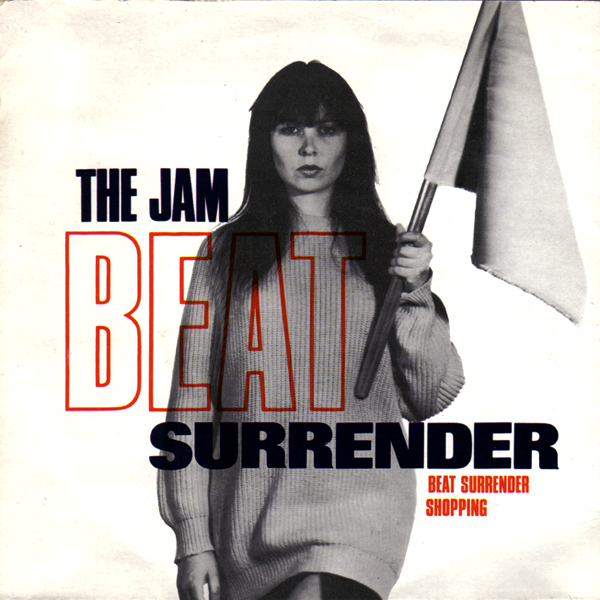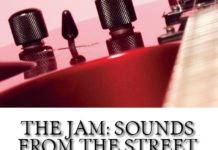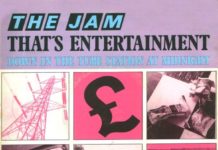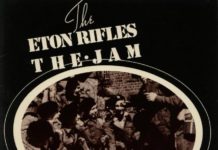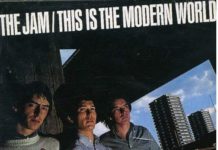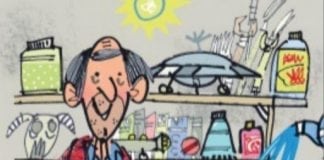Beat Surrender (Weller)
Recorded in October 1982 at the Maison Rouge Studios, Fulham
Produced by Pete Wilson
A-side released 26 November 1982; Polydor POSPX 540; reached no 1 in UK chart
B-side: ‘Shopping’/’Move On Up’/’Stoned Out Of My Mind’/’War’
With its title apparently a variation of Anita (‘Ring My Bell’) Ward’s 1979 soul hit ‘Sweet Surrender’, The Jam bowed out with their fourth and last number one hit single.
‘Beat Surrender’ entered the charts at number one, the third time the band had achieved that feat (after ‘Going Underground’ and ‘Town Called Malice’) and listed by the BBC as a record at that time.
Their only number one not to enter the charts at the summit was ‘Start!’ which took an extra week to replace David Bowie’s ‘Ashes to Ashes’ in the top spot.
‘Beat Surrender’ was intended as a rallying cry and celebration of all the band had achieved. Golden lines like Show the fakers you ain’t fooling and My doubt is cast aside, watch phonies run to hide illustrate a songwriter at the very top of his game, with the confidence to spell out exactly what he thought The Jam had stood for.
Weller even has time to liken the early punk movement with the cult mod following he had played a large part in creating, although his own interpretation of Modernism had not been reflected by some of his audience.
In the verse he insists The Jam relate to the same code at the end of their career they had adopted at the very start. Namely: ‘That bullshit is bullshit it just goes by different names.’
‘Beat Surrender’ was released as public grieving at the passing of The Jam was at its height and the Carnaby Street-led ‘Save The Jam Campaign’ was gathering pace. Despite this there would be no turning back and the country’s biggest band had written and recorded together for the last time.
The first and last time ‘Beat Surrender’ was performed live on television was on 5 November 1982, when The Jam made their final live television appearance on the first edition of Channel Four’s The Tube. Hosted by Paula Yates, Jools Holland and Muriel Gray, The Tube went on to become a cult TV show.
The Jam’s appearance on its debut programme secured its credibility from the start, with Channel Four experiencing record viewing figures for a show of its type. Jam fans tuned in to witness, and record, the band’s farewell performance, and prior to the show Muriel Gray was given the task of interviewing Weller in his dressing room.
He claimed he had no immediate plans to form another band, though his Style Council project would be announced only weeks later.
During the emotional performance, The Jam started with a slow, horn-driven version of ‘Ghosts’ followed by quality versions of ‘In The Crowd’, ‘The Modern World’, Curtis Mayfield’s ‘Move On Up’ and ‘The Great Depression’ before Weller introduced ‘Beat Surrender’ as the band’s final single.
Viewers were given a glimpse of Paul’s future musical intentions, with the band flanked by a horn section, tambourine-playing backing singers (complete with traditional African dress) and a keyboard player.
The big band image was unusual as for years The Jam had played live as a power trio, but any suggestion that Foxton and Buckler weren’t able adapt to such a line-up is quashed by the performance here.
The Jam had never looked more comfortable or sounded better. The final song the band played on live television was ‘Precious’, once again at odds with later suggestions that Weller was unhappy with the rhythm section parts of the track.
Weller’s future musical projects included developing his own new label, Respond Records, which he intended to use to discover and promote new young artists.
One of these artists was 18-year-old singer Tracy Young, who later became known for having a minor hit with The Questions-penned song ‘The House That Jack Built’. Weller decided to use Tracy’s backing vocal on The Jam’s final hit single but more for the exposure it would give her than for the benefit of the song.
‘We don’t actually need you to do backing vocals,’ Weller shamelessly told her, ‘but it will be good exposure for you.’ In the same spirit, Paul invited Tracy to appear with the band on Top Of The Pops, where the two singers danced around out of time on a platform behind Rick and Bruce, who had taken up positions at the front of the stage.
Weller looked awkward shuffling around without his guitar and for some Jam fans enough was enough.
Musically, ‘The Bitterest Pill (I Ever Had To Swallow)’ aside, The Jam were bowing out in style but fans were still bemused by Weller’s attitude. Peter Gordon: ‘I felt that Paul was distancing himself from what was happening, and that was disappointing.
It was The Jam’s last single, a rallying cry, a snapshot of everything the band stood for and was proud of. And yet Weller wasn’t interested. He certainly didn’t look too interested.’
The single’s sleeve featured Paul’s girlfriend Gill holding a white flag of surrender, while the sleeve notes introduced The Boy Wonder, a nom de plume for Paul himself. – Albert Jack
Albert Jack AUDIOBOOKS available for download here
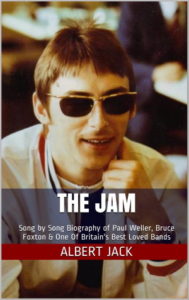
The Jam: Sounds From the Street

